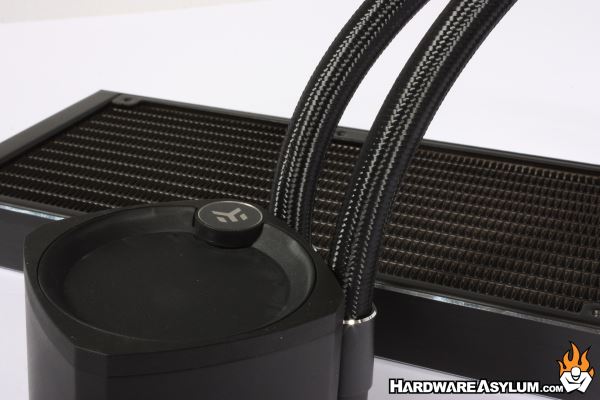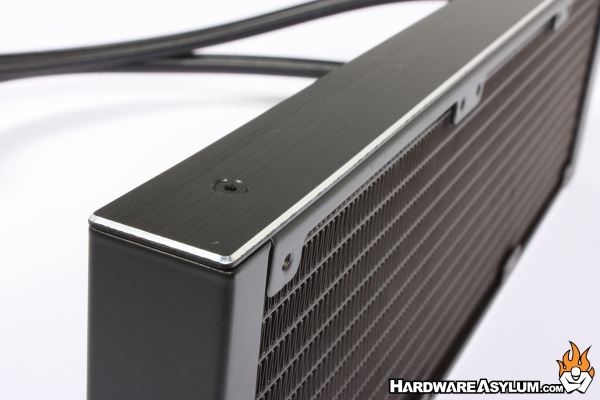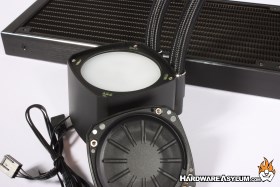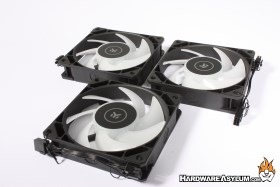EK Nucleus AIO CR360 Lux -D-RGB Cooler Review
Author: Dennis GarciaIntroduction
When you think of EK the first thing that comes to mind is custom DIY watercooling equipment including CPU blocks, GPU blocks, radiators, fittings and custom distro plates. EK has done extremely well in that space and while it isn’t what makes them the most money it is what makes them very well known in the PC Hardware Enthusiast community. We have featured a number of EK items including the “Classic” DIY Kit and several builds centered on the Quantum Momentum and ROG Maximus XII Formula launched.
In this review we will be looking at one of their newest AIO watercooling solutions, the EK Nucleus AIO. This cooler features a 360mm radiator and custom pump block design. You will find ARGB lights under the removable lid of the pump block and across the three 120mm daisy chainable ARGB fans.

The current trend in the AIO design space is to build tall pump blocks. I suspect this is to get around the “patent problem” but also gives the cooler a nice aesthetic that has been lost on older designs.
Across the top you’ll find a translucent cover with the EK logo in the corner. This panel can be removed and repositioned so that the logo is always facing the right direction. If you look carefully, you will see three contact points on the pump body which supply an ARGB signal to the EK logo which ensures that the logo can be lit up in any of the four positions.
Thermal compound is pre-applied and quite a bit softer than you would expect.
Decorative cloth braiding can be found on the thick rubber hoses along with an interesting detail at the radiator. Typically, the hoses will terminate with a fitting on the radiator however, on the Nucleus AIO you will find a plastic cover that is just tall enough to match the thickness of the included 120x120x25mm cooling fans.
Speaking of radiator, the fin density is quite open to promote good airflow. This is important as it will allows you to use quiet low-pressure fans without impacting overall performance. Had the fin density been greater you can effectively increase cooling performance but typically run into back pressure issues that pushes air back through the fan instead of through the radiator.

Along the edges of the radiator, you’ll find a decorative beveled edge to help dress up the aluminum end plates. Given that these edges are viewable I can appreciate the attention to detail.
As was mentioned before the included 120mm RGB fans can be daisy chained together using a set of special plugs. The wiring is quite simple, the upper three pins are the ARGB signal while the lower four are dedicated to PWM fan control.
Once the fans are connected, you’ll attach a longer tail with plugs to interface the motherboard. The ability to daisy chain fans has become one of the greatest factory modifications I have ever used. Not only does it clean up unnecessary cable clutter but, ensures that every fan is getting the same signal information for the best performance.







